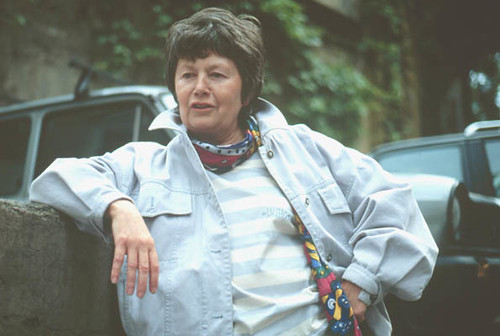.jpg) |
| Jeanne Heuving [University of Washington] |
from Jeanne Heuving’s Omissions Are Not Accidents: Gender in the Art of
Marianne Moore, 1992:
For
[Jacques] Lacan, human identity is a powerful fiction in which the
“I,” through the mirror of an other or an actual mirror,
conceives of himself as total and complete. While the formation of
identity as part of Lacan’s imaginary is constituted through the
“lure of [the] spatial,” subjectivity as part of Lacan’s
symbolic is constituted through language, which is underwritten by
the Law of the Father or the Phallus. By acquiring language, the
imaginary “I” is deflected onto the social “I.” However, for
the female this deflection does not occur as completely because as a
woman she is positioned differently with respect to the symbolic
order or the Law of the Father. The female subject remains, at least
in part, “excluded by the nature of things which is the nature of
words.”
[Luce]
Irigaray, then, uses and exploits Lacan’s conception of the
imaginary and symbolic. For Irigaray, the formation of identity in
the mirror stage is implicitly a masculine formation, especially
since it can only be conceived retrospectively in language, through
the symbolic order underwritten by the Law of the Father. Throughout
her writing, Irigaray deliberately conflates the mirror stage with
the phallic direction of that identity that occurs through the Law of
the Father, emphasizing women’s resulting subordination in a
specular discourse. And for Irigaray women’s position “elsewhere”
than this imaginary-symbolic, this specular discourse, is
problematical as well as advantageous. It is problematical in that
“woman” without her own self-representation is easily absorbed
into masculine representations of her — unable to establish the
place of her own “self-affection.” In his discourse, she remains
frozen and mute — a Mirror for him. However, while she is at least
partially “excluded by the nature of things which is the nature of
words,” from Lacan’s symbolic, she can experience her difference
from his projections of her and from the Law of the Father.
For
Irigaray, woman’s existence “elsewhere” allows her, then, an
important, if partial, freedom from the proper or the symbolic. For
Irigaray, women can begin to speak as
women in at least two crucial ways. They can mimic the “feminine”
as it is prescribed by the “masculine,” thereby revealing their
difference from this projection. And they can practice a fluid and
contradictory writing, a feminine écriture, in which proper meaning
is transgressed and subverted. In this writing of her own
“self-affection,” a woman can disrupt the specularity of
discourse by privileging multiplicity over singularity, discontinuity
over unity, fluidity over stasis, metonymy over metaphor, comedy over
tragedy, openness over closure, and the other as other over the other
as mirror.
While
feminist literary critics have frequently celebrated how various
women’s writings form a kind of écriture, Irigaray is far more
ambivalent. Concerning women’s multiplicity and multiple writing,
Irigaray poses the question:
Must
this multiplicity of female desire and female language be understood
as shards, scattered remnants of a violated sexuality? A sexuality
denied? The question has no simple answer. The rejection, the
exclusion of a female imaginary, puts woman in the position of
experiencing herself only fragmentarily, in the little-structured
margins of a dominant ideology, as waste, or excess, what is left of
a mirror invested by the (masculine) “subject” to reflect
himself, to copy himself. Moreover, the role of “femininity” is
prescribed by this masculine specula(riza)tion and corresponds
scarcely at all to women’s desire which may be recovered only in
secret, in hiding, with anxiety and guilt.
Indeed,
for Irigaray there is no final way out of masculine discourse, at
best women can only begin “to return the masculine to its own
language. . . . Which means that the masculine would no longer be
‘everything.’” By Irigaray’s account, the female subject is
itself a contradiction, a “can’t say,” existing in an
“elsewhere” that has not been absorbed by the self-reflecting,
comprehensive systematicity of discourse.
The
theoretical writings of Pierre Macherey and Luce Irigaray allow for
an elaboration of [Marianne] Moore’s doubly paradoxical quest: to
write a universal poetry that includes her perspective as a woman and
to construct a universal consciousness out of a “direct treatment
of the ‘thing.’” In both cases, but for different reasons,
Moore is working within and against a symbolic or specular form of
expression.
 |
| Luce Irigaray [Rino Bianchi] |
No comments:
Post a Comment